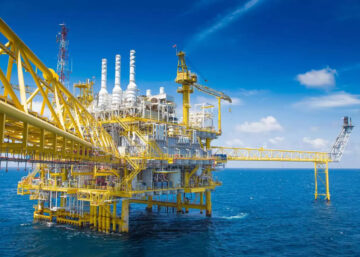The terms ’bunding’ means to provide oil resistant containment around a storage vessel. A ’bunded’ tank therefore consists of ‘a tank within a tank’. In the event of a spillage originating from the inner tank, any surplus fuel will be safely and securely contained within the outer tank or ‘bund’. The environmental benefits of bunded tanks are well understood and they are now mandatory at above ground installations in many European countries.
There are two means of providing a bund at an oil installation. The easiest method at most installations, is simply to buy an integrally bunded tank, which are available from a choice of manufacturers. The alternative method is to construct a masonry bund in accordance with an approved standard (e.g. CIRIA Report No 163)… noting of course, that simply laying several layers of block around an existing tank will not suffice! Generally, the cheapest and most cost-effective method is to buy an integrally bunded tank and this is the preferred choice of most UK installers.
Throughout the British Isles, it is a legal requirements that all external, above ground installations with an installed capacity in excess of 200 litres, at commercial, industrial and institutional premises should be bunded. However, did you know that as stated in British Standard BS5410 Part 1 and OFTEC Technical Instruction Book 3, bunded tanks are also often required at domestic installations too?
To ensure compliance with all current standards and guidelines, OFTEC provides a useful checklist to determine whether or not a bund is required at domestic premises. These requirements are usefully summarized in OFTEC Technical Instruction TI/133 ‘Assessment of the Risk of Environmental Damage being caused by Spillage from Domestic Oil Storage Tanks’. Copies of TI/133 can be downloaded free by visiting the OFTEC website.
It is recommended that a Risk Assessment be undertaken by an OFTEC Registered Installer prior to choosing and installing any tank. Further it is recommended that a copy be kept on file of each completed Assessment.
According to TI/133, a bunded tank must be fitted at all commercial, industrial and institutional premises… and at domestic premises, if a domestic installation displays any of the following characteristics:
>> Installed capacity is in excess of 2,500 litres / c.550 gallons
>> The tank is located within 10 metres of controlled water e.g. river, lake, field drain or ditch
>> The tank is located where a spillage could run into an open drain or loose fitting manhole cover
>> The tank is situated within 50 metres of a borehole or spring
>> The tank is positioned over hard surfaced ground that could enable any spillage to enter controlled water
>> The tank located in a position where the vent point is not visible from the fill point e.g. at a terrace house featuring an offset fill line, with the fill point at the front of the house and the tank situated at the rear of the house.
>> If there is any other potential environmental hazard, unique to the site.
When an oil storage tank is installed and maintained correctly, oil is an inherently safe fuel choice. However, install a single skin tank where a bunded tank is required, and even a small spillage can cause considerable and on occasion, irreparable environmental damage. Clean up costs can easily run into five figures and there is the prospect of a possible court appearance, significant fines, substantial legal costs… not to mention adverse publicity and a tarnished reputation.
Even if a bunded tank is not currently required, it is worth considering, given their increasing prevalence throughout Europe and in anticipation of possible, future environmental requirements. For instance the enactment of The Control of Pollution (Oil Storage) (England) Regulations 2001, has already required thousands of single skin tanks at affected premises (i.e. commercial, industrial and institutional premises) across England to be removed or upgraded to a bunded tank.
Therefore, ensuring you choose and recommend the right choice of tank for each installation, doesn’t simply make environmental sense, but by minimizing potential installer liabilities and maintaining good customer relationships, makes excellent commercial sense too.



